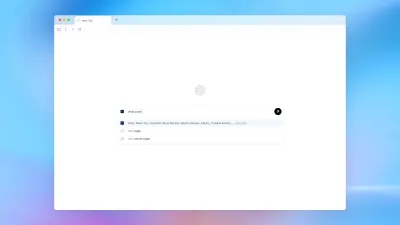Microsoft Unveils Windows ML for Developers, Ushering in a New Era of AI-Powered Windows Applications
By: @devadigax

Microsoft has officially launched Windows ML as generally available for production use, marking a major milestone in the company’s strategy to embed artificial intelligence capabilities directly within the Windows ecosystem. This platform is designed to empower developers to build AI-powered applications that run efficiently on-device across a broad range of Windows 11 devices, starting with the 24H2 update and later versions.
Windows ML, first introduced in a preview capacity at Microsoft’s Build 2025 conference, acts as a sophisticated AI inferencing runtime optimized for local execution of machine learning models on CPUs, GPUs, and neural processing units (NPUs). Rather than relying purely on cloud-based AI, this local approach offers numerous benefits including reduced latency, enhanced data privacy since sensitive processing happens on-device, and lower operational costs. Developers can now deploy AI models seamlessly to millions of Windows devices with greater confidence and fewer dependencies on network connectivity.
At its technical core, Windows ML functions as a hardware abstraction layer that automatically detects and selects the most suitable processing resource available on the device. This could be the CPU for general flexibility, the GPU for power-intensive tasks such as image or video processing, or the NPU for energy-efficient AI compute. This intelligent distribution eliminates the need for complex developer handling of diverse runtime components, simplifying the software development lifecycle considerably.
In building Windows ML, Microsoft has partnered closely with major silicon vendors including AMD, Intel, Nvidia, and Qualcomm to ensure broad hardware compatibility and performance optimization. Support extends across the latest x86 processors, Snapdragon X series Arm chips, and discrete GPUs from industry-leading manufacturers. These partnerships also provide execution providers that Windows ML manages dynamically to maximize hardware utilization.
The platform’s support for the popular ONNX (Open Neural Network Exchange) model format further enhances its versatility, enabling developers who use major machine learning frameworks like PyTorch or TensorFlow to convert their models easily for deployment on Windows. Microsoft has also integrated Windows ML tooling into Visual Studio, adding improved debugging, model previews, and ONNX export capabilities, thereby streamlining AI project development from training through deployment.
The arrival of Windows ML coincides with Microsoft’s broader vision of hybrid AI, which balances powerful cloud computing resources with efficient local processing on client devices. This hybrid approach aims to unlock new AI scenarios that require real-time responsiveness and offline capabilities—such as semantic search, real-time image recognition, deepfake detection, video streaming optimization, and creative workflows in applications like Adobe Premiere Pro and After Effects.
In addition to consumer and creative applications, Windows ML’s ability to run ML workloads on edge and IoT devices positions Windows as a strong platform for industries with stringent latency and privacy requirements, including healthcare, logistics, and manufacturing. Microsoft’s Edge ML Deployment Toolkit enables smooth rollout of AI models on specialized Windows IoT and edge hardware, expanding use cases for low-latency, on-site intelligence.
For developers and organizations, Windows ML’s general availability signals a production-ready ecosystem for building and scaling AI-driven experiences securely and efficiently. However, success in deploying local AI features depends on detailed engineering practices like hardware profiling, fallback strategies for execution providers, and ongoing driver and firmware optimization.
Overall, Microsoft’s Windows ML launch is a transformative step toward making every Windows device a capable AI compute platform. By harnessing local AI power while maintaining deep silicon integration and a unified development experience, Microsoft is opening the doors for a new wave of intelligent, privacy-preserving Windows applications that deliver faster, richer functionality right on users’ devices. This initiative establishes Windows as one of the most open and powerful platforms for local AI innovation in 2025 and beyond.
Windows ML, first introduced in a preview capacity at Microsoft’s Build 2025 conference, acts as a sophisticated AI inferencing runtime optimized for local execution of machine learning models on CPUs, GPUs, and neural processing units (NPUs). Rather than relying purely on cloud-based AI, this local approach offers numerous benefits including reduced latency, enhanced data privacy since sensitive processing happens on-device, and lower operational costs. Developers can now deploy AI models seamlessly to millions of Windows devices with greater confidence and fewer dependencies on network connectivity.
At its technical core, Windows ML functions as a hardware abstraction layer that automatically detects and selects the most suitable processing resource available on the device. This could be the CPU for general flexibility, the GPU for power-intensive tasks such as image or video processing, or the NPU for energy-efficient AI compute. This intelligent distribution eliminates the need for complex developer handling of diverse runtime components, simplifying the software development lifecycle considerably.
In building Windows ML, Microsoft has partnered closely with major silicon vendors including AMD, Intel, Nvidia, and Qualcomm to ensure broad hardware compatibility and performance optimization. Support extends across the latest x86 processors, Snapdragon X series Arm chips, and discrete GPUs from industry-leading manufacturers. These partnerships also provide execution providers that Windows ML manages dynamically to maximize hardware utilization.
The platform’s support for the popular ONNX (Open Neural Network Exchange) model format further enhances its versatility, enabling developers who use major machine learning frameworks like PyTorch or TensorFlow to convert their models easily for deployment on Windows. Microsoft has also integrated Windows ML tooling into Visual Studio, adding improved debugging, model previews, and ONNX export capabilities, thereby streamlining AI project development from training through deployment.
The arrival of Windows ML coincides with Microsoft’s broader vision of hybrid AI, which balances powerful cloud computing resources with efficient local processing on client devices. This hybrid approach aims to unlock new AI scenarios that require real-time responsiveness and offline capabilities—such as semantic search, real-time image recognition, deepfake detection, video streaming optimization, and creative workflows in applications like Adobe Premiere Pro and After Effects.
In addition to consumer and creative applications, Windows ML’s ability to run ML workloads on edge and IoT devices positions Windows as a strong platform for industries with stringent latency and privacy requirements, including healthcare, logistics, and manufacturing. Microsoft’s Edge ML Deployment Toolkit enables smooth rollout of AI models on specialized Windows IoT and edge hardware, expanding use cases for low-latency, on-site intelligence.
For developers and organizations, Windows ML’s general availability signals a production-ready ecosystem for building and scaling AI-driven experiences securely and efficiently. However, success in deploying local AI features depends on detailed engineering practices like hardware profiling, fallback strategies for execution providers, and ongoing driver and firmware optimization.
Overall, Microsoft’s Windows ML launch is a transformative step toward making every Windows device a capable AI compute platform. By harnessing local AI power while maintaining deep silicon integration and a unified development experience, Microsoft is opening the doors for a new wave of intelligent, privacy-preserving Windows applications that deliver faster, richer functionality right on users’ devices. This initiative establishes Windows as one of the most open and powerful platforms for local AI innovation in 2025 and beyond.
Comments
Related News

OpenAI Unveils ChatGPT Atlas: Your Browser Just Became Your Smartest AI Assistant
In a move poised to fundamentally reshape how we interact with the internet, OpenAI has officially launched ChatGPT Atlas, a gr...
@devadigax | 22 Oct 2025
In a move poised to fundamentally reshape how we interact with the internet, OpenAI has officially launched ChatGPT Atlas, a gr...
@devadigax | 22 Oct 2025

Netflix Doubles Down on Generative AI, Challenging Hollywood's Divide Over Creative Futures
In a move that underscores a growing chasm within the entertainment industry, streaming giant Netflix is reportedly going "all ...
@devadigax | 21 Oct 2025
In a move that underscores a growing chasm within the entertainment industry, streaming giant Netflix is reportedly going "all ...
@devadigax | 21 Oct 2025

AI Agent Pioneer LangChain Achieves Unicorn Status with $1.25 Billion Valuation
LangChain, the innovative open-source framework at the forefront of building AI agents, has officially joined the exclusive clu...
@devadigax | 21 Oct 2025
LangChain, the innovative open-source framework at the forefront of building AI agents, has officially joined the exclusive clu...
@devadigax | 21 Oct 2025

Meta Boots ChatGPT From WhatsApp: A Strategic Play for AI Dominance and Walled Gardens
In a significant move that reshapes the landscape of AI chatbot accessibility, OpenAI has officially confirmed that its popular...
@devadigax | 21 Oct 2025
In a significant move that reshapes the landscape of AI chatbot accessibility, OpenAI has officially confirmed that its popular...
@devadigax | 21 Oct 2025

Meta's New AI Peeks Into Your Camera Roll: The 'Shareworthy' Feature Raises Privacy Eyebrows
Meta, the parent company of Facebook, has rolled out a new, somewhat controversial artificial intelligence feature to its users...
@devadigax | 18 Oct 2025
Meta, the parent company of Facebook, has rolled out a new, somewhat controversial artificial intelligence feature to its users...
@devadigax | 18 Oct 2025
 AI Tool Buzz
AI Tool Buzz